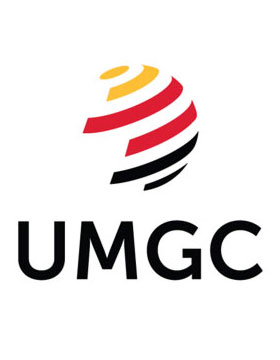Growing up in Maryland, Micheall Myrie '19 wasn’t quite sure how to reconcile what he thought he wanted to do with his life with what opportunities he had around him. So he did what many others in his position did: enlisted in the military.
“I joined the Army and became a tank mechanic, even though I always wanted to work in the creative world,” he explains. “Jobs like that weren’t available back then.”
Creating his own future
After four years of getting his hands dirty working as a diesel mechanic, Myrie knew it was time to move on. He went back to school and earned a two-year degree in the hopes of securing a job in a creative field.
“I started off designing fliers and logos for friends and other people I met along the way,” he says.
Soon, he landed his first position as a designer in a marketing department. Shortly after, though, he realized the limitations of his associate degree. Not everyone at his company understood design, yet he was expected to take creative direction from them.
“This job is so subjective,” he notes. “Everybody had an opinion, but I always thought mine was right.”
In his early 30s and with the increasing responsibilities of parenthood, he decided the time had come to return to school to earn a bachelor’s degree, something he believed would give him the credibility to speak with authority about his design work. Myrie decided to attend UMGC because the remote classes enabled him to balance his family and personal life with his education and allowed him to work at his own pace.
Advancing his education—and his career
In this middle of his degree program, he was contacted by an agency that was looking for a designer to work on graphic animations for the United States Department of Agriculture (USDA) on a contract basis. He jumped at the opportunity and was pleased to find that the USDA team wanted someone who knew what they were doing to take charge of their design needs.
As he began the job, he was thrilled that he could apply all of the subject matter he was learning in his graphics and communications classes to real-world scenarios at the USDA.
“While I was taking classes, I was being presented with different challenges at work, and I could apply the new skills I had learned,” he says.
His leaders at the USDA took note of his skills and hired him as a full-time employee after a year of contact work.
“Everything fell into place perfectly at the right time for me,” he says. “By the time I was finishing my degree, the level of confidence I had was towering compared to what it had been a few years before taking my classes at UMCG.”
He also found that he appreciated the learning experience he had at UMGC more than he ever had before in all his years of being in school.
“It was a wonderful experience,” he says.
Free to be innovative
With his degree in hand and a supportive employer, Myrie finally felt like he was able to make his mark. In his role at the USDA, he was tasked with updating training materials for food inspectors and slaughterhouse inspectors. He had ideas for making training more engaging while staying within his team’s budget. First, he made a plan for moving the training content online. Then he got creative.
“The director liked my ideas for interactive videos and other interactive features using multimedia,” Myrie explains.
This approach also helped the USDA address the challenges they were facing with their training program. While inspectors learned what they needed to do in their roles, many had never been in a slaughterhouse environment. When they went out into the field, some surprised by what they saw, and turnover for the inspector positions was high.
“We made the training more visual so potential inspectors would have a greater idea of what they were getting involved in,” says Myrie. “That helped with the turnover rate, and it also better prepared inspectors and managers to do their jobs.”
Because of this success, Myrie has continued to incorporate graphics, including 3D animation, into training materials.
Highlighting diversity at the USDA
Myrie captured the attention of leadership, who thought he would also do a great job leading the USDA’s newsletter dedicated to diversity and inclusion, which was part of the agency’s equal opportunity efforts.
“It was a neglected program before I took charge,” he says.
Thanks to his creative ideas, design work and writing skills, Myrie led this effort for three years, turning out what became an award-winning publication that highlighted events for special interest months and the stories of a wide range of colleagues from around the USDA.
“I had a a fantastic experience promoting awareness of the LGBTQ and AAPI communities, Black history, Hispanic history. I learned a lot of cool things,” he says. “And my time doing all the writing I did at UMGC definitely helped me produce newsletters that were well received. I am very appreciative of that.”
Sharing what he learned
Because he has had such a positive experience, Myrie is eager to support up-and-coming professionals so they can achieve their goals.
“I tell any new, young graphic designers to learn as much as possible,” he notes. “Always strive to learn. If you feel you are stuck and not going anywhere, educate yourself. Make it happen.”
Because he hasn’t shied away from education, Myrie positioned himself for success in the career he wanted, and he encourages others to do the same.
“Prepare yourself for the future, and never be satisfied,” he insists.
Read more alumni news.
